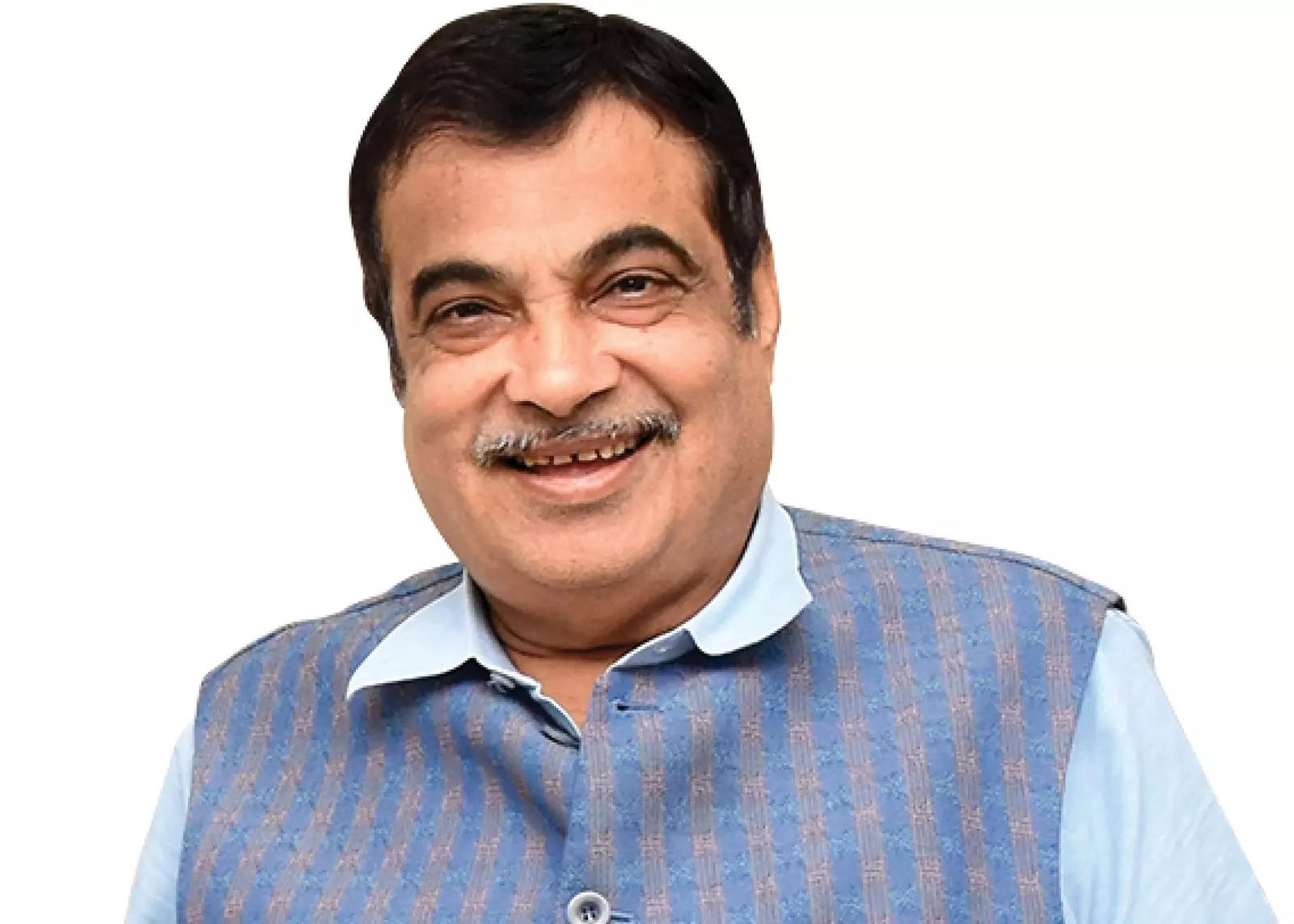
“Under the Vision 2047 Master Plan, the Ministry of Road Transport & Highways has adopted a big data driven approach to identify the highway network that the country’s growing economy will require as we move closer to 2047.
“This approach is being built by leveraging cross-functional data collated from toll transactions, rail freight loading, the mapping of existing and planned infrastructure using the PM Gati Shakti platform to baseline the transportation capacity, and other relevant areas. Based on this data, the requirement for transportation related infrastructure has been assessed to forecast the traffic patterns, regarding both passenger and freight movement across the country, and develop a comprehensive Origin-Destination matrix.”
This was stated by Nitin Gadkari, Minister of Road Transport & Highways, Government of India, in conversation with Anoop Verma, Editor-News, ETGovernment. In the interview that follows, Nitin Gadkari sheds light on the progress of the ongoing infrastructure projects. He also elucidates the Modi government’s plan for developing world class infrastructure that will enable India to achieve the vision of Viksit Bharat 2047.
Edited excerpts:
The Ministry of Road Transport and Highways has been successful in executing a number of large infrastructure projects, particularly through initiatives like the Bharatmala Pariyojana. Did the Ministry adopt a new kind of strategy or model for infrastructure development in the last ten years?
In the past, the efforts of the government were mainly directed towards project level planning. In 1998, the National Highway Development Project (NHDP) was launched. NHDP envisaged a project-based development approach for road development and upgrading National Highways in the country. The Golden Quadrilateral and the North-South and East-West corridors were developed under NHDP. The focus was also on addressing congestion in specific stretches. While all these projects involved detailed planning, design and execution, the adoption of a project-based approach did not lead to the best outcomes, as there was inconsistent user experience, multiple chokepoints due to varying lane configurations, and sub-optimal connectivity to major economic centers of the country.
To address the deficiencies of project-based planning, the government decided to undertake infrastructure projects through Corridor Level Planning. A corridor-based development approach was adopted in Bharatmala Pariyojana for designing and implementing a network of high-speed corridors. These projects were developed through scientific logistic study and were designed to cater to 70% to 80% of the freight movement in the country. Post completion, the infrastructure developed under Bharatmala Pariyojana will cover 31 States and Union Territories while connecting over 550 districts. We expect the Bharatmala Pariyojana to significantly contribute towards the improvement of logistics efficiency and connectivity in the country. The government has formulated the vision of making the country fully developed by 2047. How is the Ministry of Road Transport & Highways planning future projects to ensure that the country has world class infrastructure by 2047?
Under the Vision 2047 Master Plan, the Ministry of Road Transport & Highways has adopted a big-data driven approach to identify the highway network that the country’s growing economy will require as we move closer to 2047. This approach is being built by leveraging cross-functional data collated from toll transactions, rail freight loading, the mapping of existing and planned infrastructure using the PM Gati Shakti platform to baseline the transportation capacity, and other relevant areas. Based on this data, the requirement for transportation related infrastructure has been assessed to forecast the traffic patterns, regarding both passenger and freight movement across the country, and develop a comprehensive Origin-Destination matrix.

We have used GDP projections and other data to forecast the traffic patterns up to 2047 and build a holistic picture of the infrastructure the country will require in the next 25 years. An advanced transportation model has been developed to estimate congestion expected on the existing and under-development highway network from the rise in demand for transportation. By comparing projected traffic volumes with current infrastructure, the model identified critical bottlenecks and areas requiring capacity expansion. Corridors were subsequently identified to alleviate congestion in the most optimal way and improve logistics efficiency, with a strong emphasis on ensuring regional equity and inclusive development.
The Vision 2047 master plan envisages a holistic and multi-modal approach for the transportation sector. This is in line with the PM Gati Shakti vision of synergy in the development plans across the various infrastructure ministries. All major projects identified as part of Vision 2047 master plan are analyzed in the Network Planning Group during the pre-preparation stage to ensure optimized alignments and minimum interference with other infrastructure assets. Upon execution of the master plan, India will be among the top 10 of G20 nations in-terms of density of high-speed corridors.
In the last 10 years, the Ministry has made a major push for highway construction. The National Highway network grew by 60%, rising from 91,287 km in 2014 to 146,195 km, and the National High-Speed Corridors has increased from 93 km in 2014 to 2,474 km. What are your plans for the next 10 years?
I talked about the Vision 2047 master plan earlier. Given the significant role of road infrastructure in India’s overall logistics requirement, MoRTH has formulated this master plan to cater to road infrastructure requirements for achieving the Viksit Bharat aspirations. With this initiative, India is planning to develop a network of 50,000 km of high-speed corridors by 2036-37. By 2047, the network will be 2,00,000 to 2,30,000 kms. Also, by 2047, India aims to develop 73 Multi Modal Logistics Parks (MMLPs) to facilitate modal shift to more cost-effective modes with the objective of reducing logistics cost. The government has already awarded six MMLPs. These include: Jogighopa, Chennai, Indore, Bengaluru, Nagpur and Jalna. Free-flow tolling technologies like Global Navigation Satellite System and Automatic Number Plate Recognition have been planned for installation, with the aim of reducing the wait-time at toll plazas to 0 seconds from 47 seconds currently.
India is trying to cut down its greenhouse gas emissions and become a Net Zero country by 2070. What steps is MoRTH taking to achieve the goal of sustainable transport?
The Ministry is promoting sustainable highway development by encouraging the use of low or zero greenhouse gas emission materials such as green concrete, bio bitumen and bamboo crash barriers. We are using inert waste and plastic in subgrade and bituminous mixes to promote circularity. The greening of highways is being undertaken with 1000 saplings planted every km of national highway. A pilot project for generation of solar energy is being undertaken along the Amritsar-Bhatinda-Jamnagar greenfield corridor. The government is also having a big thrust on electric, alternative fuel vehicles and related infrastructure. The total annual sales of electric and alternate fuel vehicles currently stands at 2% and 0.4% for passenger and commercial vehicles respectively. By 2047, we aim to increase the penetration of electric and alternate fuel vehicles, as a percentage of total sales, to 100%.
In a recent draft regulation, MoRTH has proposed 50% tax refund for scrapping old polluting vehicles. How much contribution do you expect this regulation to make in getting people and business organizations to scrap their old polluting vehicles?
India has a large number of End of Life Vehicles, which are known to make significant contributions to vehicular pollution. Since the launch of the Vehicle Scrapping Policy, we have successfully scrapped more than 1.75 lakh vehicles at 84 vehicle scrapping facilities. The government is providing 15% to 25% concession in Motor Vehicle Tax and waiver on registration fee for all transport and non-transport vehicles purchased against scrapping certificates. My Ministry has released a draft notification to increase concession to 50%. About seven major auto OEMs, which cover 95% of the commercial vehicle market, are extending discounts up to 3% on vehicles purchased against scrapping vehicles.
You recently talked about providing cashless treatment to the victims of road accidents. How much progress have you made in implementing this policy?
The country witnesses more than 4.5 lakh road accidents and 1.6 lakh deaths every year. Estimates suggest that around 30% of these deaths are due to lack of timely medical care, within the period that in the medical parlance is known as the Golden Hour. To fulfil the Government’s commitment to reduce road accident fatalities, the Ministry has developed a scheme for cashless treatment of road accident victims. Under the scheme the victims of road accidents are eligible for a cashless treatment up to ₹1.5 Lakh for a maximum period of 7 days. The objective of the scheme is to provide emergency treatment in the Golden Hour and save lives. The pilot for this scheme is currently underway in Assam, Chandigarh, Punjab, Uttarakhand, Haryana and Puducherry. Based on the learning from the pilot, the Ministry will expand the project into other States and UTs.
In the last 10 years, the infrastructure sector has played a foundational role in India’s economic growth and development. Going forward, how much contribution do you think the infrastructure sector will make to the national economy?
Infrastructure development plays a foundational role in the economic prosperity of a country. Every rupee spent on infrastructure has a multiplier effect of 2.5X to 3X on the nation’s GDP–this ensures rapid economic growth and positive social outcomes. To support the GDP growth, MoRTH will sustain the pace of highway infrastructure development in the country, with a shift in focus to development of high-speed access-controlled corridors for logistics efficiency as part of Vision 2047 master plan for national highway development.


